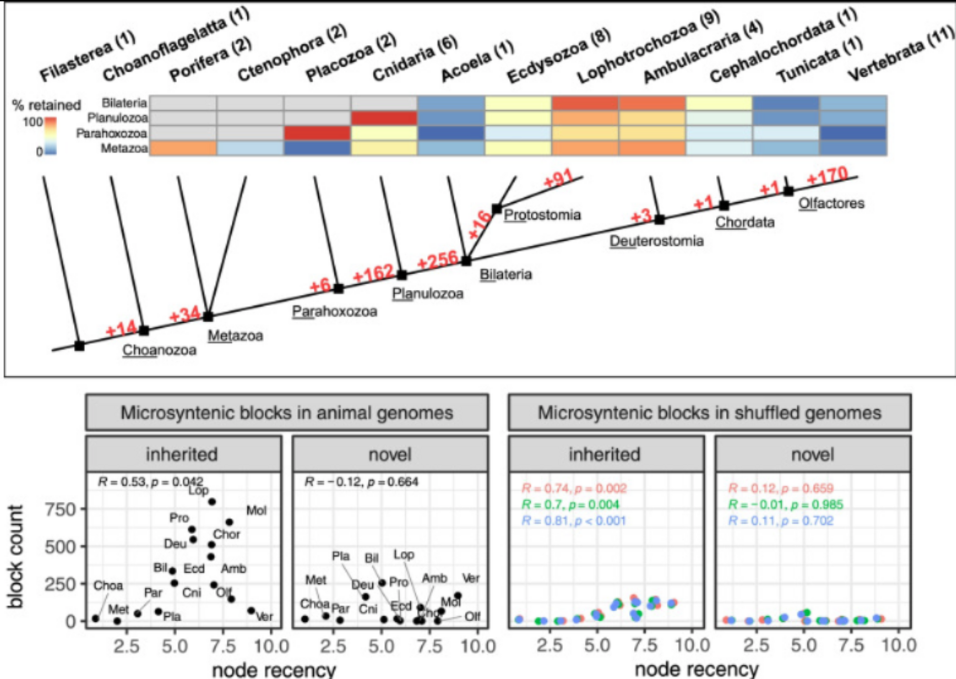Animal genomes are strikingly conserved in terms of local gene order (microsynteny). While some of these microsyntenies have been shown to be coregulated or to form gene regulatory blocks, the diversity of their genomic and regulatory properties across the metazoan tree of life remains largely unknown.
Our comparative analyses of 49 animal genomes reveal that the largest gains of synteny occurred in the last common ancestor of bilaterians and cnidarians and in that of bilaterians. Depending on their node of emergence, we further show that novel syntenic blocks are characterized by distinct functional compositions (Gene Ontology terms enrichment) and gene density properties, such as high, average and low gene density regimes. This is particularly pronounced among bilaterian novel microsyntenies, most of which fall into high gene density regime associated with higher gene coexpression levels. Conversely, a majority of vertebrate novel microsyntenies display a low gene density regime associated with lower gene coexpression levels.
Our study provides first evidence for evolutionary transitions between different modes of microsyntenic block regulation that coincide with key events of metazoan evolution. Moreover, the microsyntenic profiling strategy and interactive online application (Syntenic Density Browser, available at: synteny.csb.univie.ac.at ) we present here can be used to explore regulatory properties of microsyntenic blocks and predict their coexpression in a wide-range of animal genomes.

